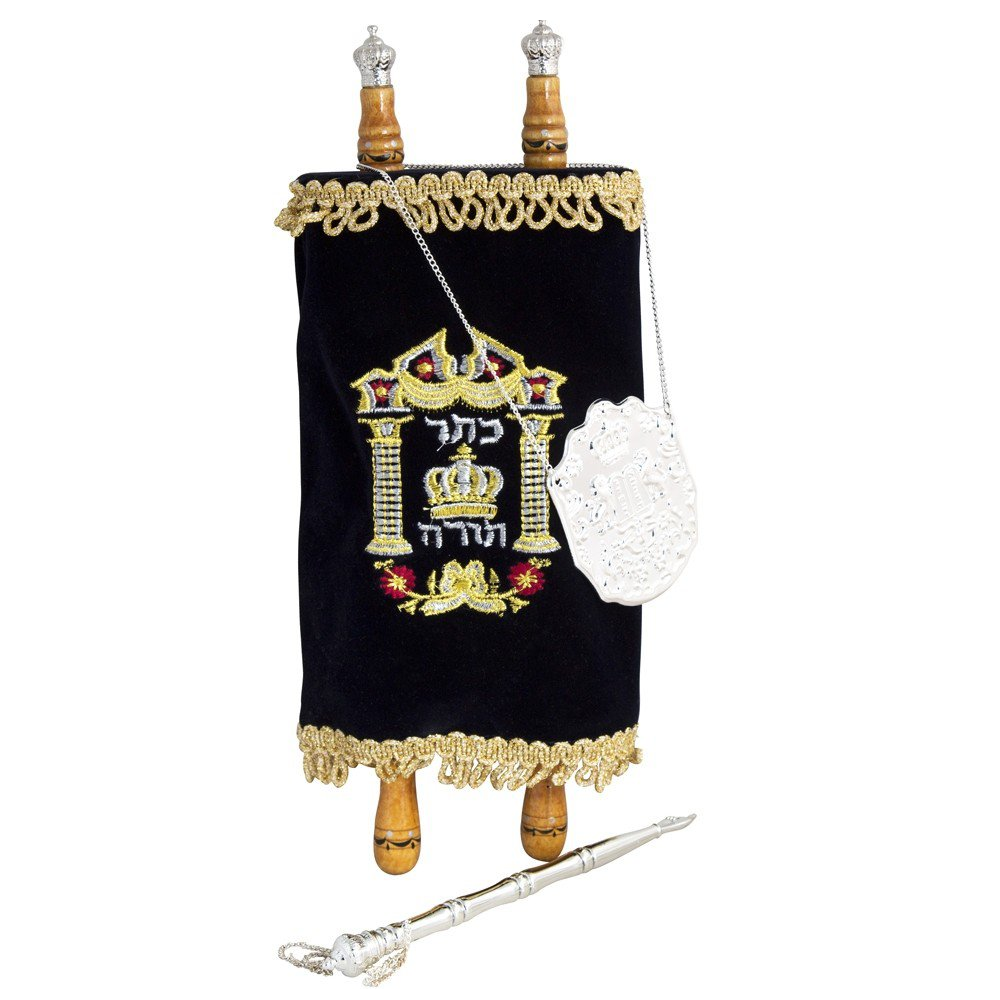|
Weekly Parashah |
|||||
| Torah: Gen. 47:28–50:26 | Haftara: 1 Kgs. 2:1–12 | Brit Chadashah: Lk. 4:31–5:11 Heb 11:21-22 1 Peter 1:3-9 |
|||
| Vayeschi (and he lived) וַיְחִי |
|||||
Scripture: |
Genesis 47:28–50:26 |
Torah |
|||
|
|
Joseph’s Promise to Jacob28 Now Jacob lived in the land of Egypt for 17 years, so the days of Jacob, the years of his life, were 147 years. 29 As the time of Israel’s death drew near, he called for his son Joseph and said to him, “If I have found favor in your eyes, please put your hand under my thigh and show me faithful kindness. Please do not bury me in Egypt. 30 When I lie down with my fathers, you must carry me out of Egypt and bury me in their burial place.” Blessing of Ephraim and Manasseh48 After these things, someone told Joseph, “Behold, your father is sick.” So he took his two sons, Manasseh and Ephraim, with him. 2 When someone told Jacob, saying, “Behold, your son Joseph has come to you,” Israel summoned his strength and sat up in the bed. 3 Then Jacob said to Joseph, “El Shaddai appeared to me in Luz, in the land of Canaan, and blessed me.” 4 He said to me, ‘I am going to make you fruitful and multiply you and turn you into an assembly of peoples, and I will give this land to your seed after you as an everlasting possession.’ 5 So now, your two sons, who were born to you in the land of Egypt before I came to you in Egypt, they are mine. Ephraim and Manasseh will be mine, just like Reuben and Simeon. 6 Any descendent of yours whom you father after them will be yours; they will be identified by the names of their brothers for their inheritance. 7 “Now as for me, when I came from Paddan, to my sorrow Rachel died along the way, in the land of Canaan, while we were still a distance from entering Ephrath. And I buried her there on the way to Ephrath (that is, Bethlehem).” https://www.biblegateway.com/passage/?search=Gen.+47%3A28%E2%80%9350%3A26&version=TLV |
||||
Scripture: |
1 Kings 2:1–12 |
Haftarah |
|||
David’s Last Instructions2 Now when the time of David drew near to die, he charged his son Solomon, saying: 2 “I—I am going the way of all the earth. So be strong[a] and be a man. 3 Keep the charge of Adonai your God, to walk in His ways, to keep His statutes, His commandments, His ordinances, and His decrees, according to what is written in the Torah of Moses, so that you may succeed in all that you do and wherever you turn 4 so that Adonai may fulfill His word which He spoke concerning me, saying: ‘If your children watch their way, to walk before Me in truth with all their heart and with all their soul, you shall not lack a man on the throne of Israel.’ https://www.biblegateway.com/passage/?search=1+Kgs.+2%3A1%E2%80%9312&version=TLV |
 |
||||
Scripture: |
Luke 4:31–5:11
|
Brit Chadashah |
|||
|
|
Healing and Deliverance in Capernaum and Beyond31 Yeshua came down to Capernaum, a town in the Galilee. He was teaching them on Shabbat, 32 and they were astounded at His teaching because His message had authority. 33 In the synagogue was a man who had an unclean demonic spirit, and he cried out with a loud voice, 34 “Ah! What have we to do with You, Yeshua of Natzeret? Have You come to destroy us? I know who You are! You are the Holy One of God!” https://www.biblegateway.com/passage/?search=Lk.+4%3A31%E2%80%935%3A11&version=TLV Hebrews 11 : 21 – 2221 By faith Jacob, as he was dying, blessed each of the sons of Joseph, and he bowed in worship while leaning on the top of his staff. 22 By faith Joseph, when his end was near, made mention of the exodus of Bnei-Yisrael and gave instructions about his bones.https://www.biblegateway.com/passage/?search=Heb+11%3A21-22&version=TLV 1 Peter 1 : 3 – 9A Message of Living Hope3 Blessed be the God and Father of our Lord Yeshua the Messiah! In His great mercy He caused us to be born again to a living hope through the resurrection of Messiah Yeshua from the dead. 4 An incorruptible, undefiled, and unfading inheritance has been reserved in heaven for you. 5 By trusting, you are being protected by God’s power for a salvation ready to be revealed in the last time. 6 You rejoice in this greatly, even though now for a little while, if necessary, you have been distressed by various trials. 7 These trials are so that the true metal[a] of your faith (far more valuable than gold, which perishes though refined by fire) may come to light in praise and glory and honor at the revelation of Messiah Yeshua. 8 Though you have not seen Him, you love Him. And even though you don’t see Him now, you trust Him and are filled with a joy that is glorious beyond words, 9 receiving the outcome of your faith—the salvation of your souls. https://www.biblegateway.com/passage/?search=1+Peter+1+%3A+3+-9&version=TLV |
||||
Parashah in 60 seconds |
|||||
Music Styles Contemporary Worship Music
Styles
On this radio station you will find the following music styles;
Contemporary Worship Music (CWM) (Praise and Worship Music)
Contemporary worship music (CWM) is a loosely defined genre of Christian music used in contemporary worship. It has developed over the past sixty years and is stylistically similar to pop music. The songs are frequently referred to as "praise songs" or "worship songs" and are typically led by a "worship band" or "praise team", with either a guitarist or pianist leading. It is becoming a common genre of music sung in Western churches, particularly in Pentecostal churches, both denominational and nondenominational. Also many non-Charismatic Protestant Churches use this type of music. Some do so exclusively. Others have services that are just traditional along with services that are just contemporary. Others simply mix this type of music in with traditional. Some Protestant churches avoid this music and remain traditional. Also, Roman Catholic churches are using this type of music in some parishes. Some mix it in with more traditional music; others have certain masses with just contemporary worship music along with traditional masses; others only use contemporary; many others steer clear of contemporary worship and stick with traditional.
History and development
In the early 1950s, the Taizé Community in France started to attract youths from several religious denominations with worship hymns based on modern melodies.
In the 1950s and 1960s the Christian Church began to place particular emphasis on reaching to the youth. Christian Unions in university environments hosted evangelistic talks and provided biblical teaching for their members, Christian cafes opened with evangelistic aims, and church youth groups were set up. Amateur musicians from these groups began playing Christian music in a popular idiom. Some Christians felt that the Church needed to break from its stereotype as being structured, formal and dull to appeal to the younger generation. By borrowing the conventions of popular music, the antithesis of this stereotype, the Church restated the claims of the Bible through Christian lyrics, and thus sent the message that Christianity was not outdated or irrelevant. The Joystrings were one of the first Christian pop groups to appear on television, in Salvation Army uniform, playing Christian beat music. The Jesus People in America also had particular influence, and began to create their own musical subculture, sometimes referred to as Jesus music— essentially hippie-style music with biblical lyrics. This Jesus music gradually bifurcated into Christian rock (music played for concerts) and 'praise music' (music for communal worship).
Churches began to adopt some of these songs and the styles for corporate worship. These early songs for communal singing were arguably the first examples of contemporary worship music, and were characteristically simple, 'Youth Praise', published in 1966, was one of the first and most famous collections of these songs and was compiled and edited by Michael Baughen and published by the Jubilate Group.
As of the early 1990s, songs such as "Lord, I Lift Your Name on High", "Shine, Jesus, Shine" and "Shout to the Lord" had been accepted in many churches. Integrity Media, Maranatha! Music and Vineyard were already publishing newer styles of music. Supporters of traditional worship hoped the newer styles were a fad, while younger people cited Psalms 96:1, "Sing to the Lord a new song". Prior to the late 1990s, many felt Sunday morning was a time for hymns, and young people could have their music on the other six days. A "modern worship renaissance" helped make it clear any musical style was acceptable if true believers were using it to praise God. The changes resulted from the Cutting Edge recordings by the band Delirious?, the Passion Conferences and their music, the Exodus project of Michael W. Smith, and the band Sonicflood. Contemporary worship music became an integral part of Contemporary Christian music.[1]
More recently songs are displayed using projectors on screens at the front of the church, and this has enabled greater physical freedom, and a faster rate of turnover in the material being sung. Important propagators of CWM today include Hillsong, Vineyard, Bethel Music and Soul Survivor.
Theology and lyrics
As CWM is closely related to the charismatic movement, the lyrics and even some musical features reflect its theology. In particular the charismatic movement is characterised by its emphasis on the Holy Spirit, personal encounter and relationship with God, and agape.










